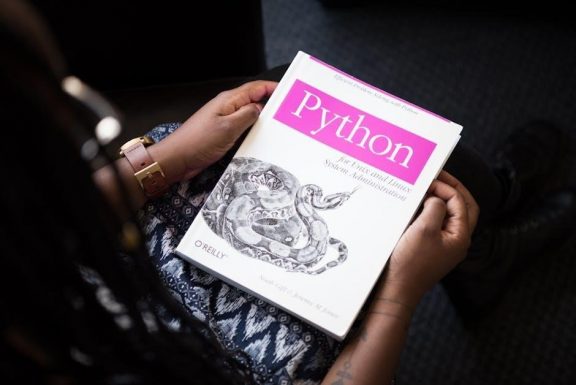Python Distilled by David M. Beazley is a concise handbook focusing on the essential core of Python 3.6 and higher. It emphasizes problem-solving and structured thinking in Python, reflecting the author’s 25 years of experience. The book avoids exhaustive reference material, instead highlighting key concepts like data abstraction, control flow, and program structure. Available as a PDF, it serves as a practical guide for developers seeking to master Python’s fundamentals efficiently.
Author Background

David M. Beazley is a renowned Python expert with over 25 years of experience in coding, writing, and teaching the language. He is the author of Python Essential Reference, a highly regarded reference book, and has spoken extensively on Python at conferences. Beazley’s teaching background has significantly influenced his writing style, focusing on core concepts and practical problem-solving. His experience spans various audiences, from beginners to advanced developers, ensuring his content is accessible yet insightful. Python Distilled reflects his deep understanding of Python’s evolution and his ability to distill complex ideas into digestible form. The book embodies his philosophy of mastering essential concepts rather than memorizing extensive references, making it a valuable resource for developers aiming to enhance their Python skills.
Key Features of the Book
Python Distilled offers a concise yet comprehensive guide to Python’s core concepts. It focuses on essential topics like data abstraction, control flow, functions, and object-oriented programming. The book provides clear, practical examples to illustrate key ideas, ensuring readers can apply their knowledge effectively. Additionally, it covers advanced topics such as generators and iterators, offering insights for both intermediate and experienced developers. Beazley’s unique approach avoids exhaustive documentation of the standard library, instead emphasizing program structure and design. The book’s compact size and focused content make it an ideal resource for those seeking to deepen their understanding of Python without getting lost in unnecessary details. Its clarity and practicality make it a standout resource for developers aiming to enhance their Python skills efficiently.
Target Audience
Python Distilled is tailored for developers seeking a deep understanding of Python’s core concepts. It caters to intermediate learners who have basic programming knowledge but want to refine their skills. The book is ideal for those who prefer concise, practical guidance over exhaustive documentation. Experienced programmers looking to solidify their grasp of Python’s fundamentals will also benefit. Additionally, it appeals to developers who value clear, example-driven explanations and want to focus on problem-solving and program structure. The book’s streamlined approach makes it accessible to anyone aiming to enhance their Python proficiency without getting bogged down in unnecessary details. Whether for professional development or personal growth, Python Distilled serves as a valuable resource for developers aiming to master Python effectively.

Core Concepts of Python Covered
Python Distilled covers essential topics like variables, data types, operators, expressions, and control flow structures. It provides a clear understanding of Python’s foundational elements, ensuring a solid grasp of the language’s core mechanics and syntax.
Variables and Data Types
Python Distilled dedicates a section to understanding variables and data types, which are fundamental to Python programming. The book explains how variables are assigned and managed, highlighting Python’s dynamic typing system. It covers basic data types such as integers, floats, strings, and booleans, providing clear examples to illustrate their usage. The section also delves into more complex data structures like lists, tuples, and dictionaries, essential for storing and manipulating collections of data; By focusing on these core concepts, the book ensures readers can effectively work with data in their programs, laying a solid foundation for more advanced topics later in the text.
Operators and Expressions
Python Distilled provides a clear overview of operators and expressions, which are essential for constructing logical and mathematical operations in Python. The book explains the different types of operators, including arithmetic, comparison, logical, and assignment operators, with examples to demonstrate their usage. It also covers operator precedence and how expressions are evaluated. Special attention is given to in-place operators and their role in modifying variables efficiently. The section highlights how expressions form the foundation of Python’s syntax, enabling developers to write concise and readable code. By mastering these concepts, readers can create more complex and dynamic programs, leveraging Python’s expressive power to solve real-world problems effectively.
Control Flow Structures
Control Flow Structures are essential for directing the execution of a program based on specific conditions or iterations. In Python Distilled, these structures are covered in detail, including conditional statements like if/else and loops such as for and while. The book explains how to use these constructs to manage program flow effectively, enabling developers to handle different scenarios and repeat tasks efficiently. It also discusses the importance of proper indentation and syntax in Python for defining code blocks within these structures; By mastering control flow, readers can create dynamic and responsive applications that adapt to varying inputs and conditions. The concise examples provided in the book help solidify understanding, making it easier to implement these structures in real-world projects. This section is crucial for building a strong foundation in Python programming.

Advanced Topics in Python
Python Distilled explores advanced topics like functions, modules, object-oriented programming, and generators, offering essential insights to expertly enhance your Python programming skills with concise guidance.
Functions and Modules
Functions and modules are foundational to organizing and reusing code in Python. In Python Distilled, David Beazley explains how functions enable modular, reusable code by encapsulating logic and reducing redundancy. Modules are introduced as a way to extend functionality by importing pre-written code, promoting modularity and code reuse. The book emphasizes the importance of structuring programs with clear function definitions and leveraging Python’s extensive standard library through modules. Practical examples demonstrate how to define functions with parameters, return values, and variable scoping, while modules are shown as a way to organize code into logical units. This section provides a solid understanding of how functions and modules are essential for writing efficient, maintainable, and scalable Python programs, aligning with the book’s focus on core language concepts and best practices for modern Python development.

Object-Oriented Programming
Object-Oriented Programming (OOP) is a cornerstone of modern Python development, and Python Distilled provides a clear, concise introduction to its principles. The book explains how classes and objects enable developers to create modular, reusable, and maintainable code. Key concepts such as inheritance, polymorphism, and encapsulation are covered, demonstrating how they help structure complex programs. Practical examples illustrate the creation of classes, methods, and attributes, while emphasizing Python’s unique approach to OOP, such as dynamic typing and method overriding. The section also highlights how OOP promotes code organization and modularity, aligning with the book’s focus on essential programming practices. By mastering these concepts, readers can develop robust, scalable applications that leverage Python’s object-oriented capabilities effectively. This section is designed to provide a solid foundation for understanding and applying OOP in real-world scenarios;
Generators and Iterators
Generators and iterators are powerful tools in Python for handling sequences and improving memory efficiency; In Python Distilled, these concepts are explored in depth, with practical examples illustrating their implementation. The book explains how generators enable lazy evaluation, allowing for efficient processing of large datasets. It also covers how iterators form the foundation of Python’s iteration model, making it easy to work with loops and iterable objects. Key features like the `yield` statement and iterator protocols are discussed, showing how they simplify code and enhance readability. By mastering generators and iterators, developers can write more efficient and scalable programs. The section provides clear guidance on integrating these concepts into everyday programming tasks, ensuring readers can leverage Python’s capabilities effectively. This focus on practical application makes the book an invaluable resource for improving coding skills.

Data Handling and File I/O
Python Distilled covers essential techniques for data handling and file operations, focusing on practical examples for reading, writing, and processing files. It emphasizes efficient data management and persistence strategies.
Data Abstraction Techniques
Python Distilled delve into data abstraction techniques, focusing on how to structure and manage data effectively in Python. The book emphasizes practical approaches to encapsulate data and behavior, ensuring code modularity and scalability. It explores the use of classes, objects, and modules to abstract complex data representations, making code easier to maintain and reuse. Beazley provides insights into how to leverage Python’s built-in data structures and custom data types to enforce abstraction. The book also covers techniques for separating interfaces from implementations, allowing developers to change underlying data structures without affecting other parts of the program. By mastering these techniques, readers can write more organized, efficient, and maintainable Python code, aligning with the book’s focus on problem-solving and clean coding practices.
File Handling and Persistence
Python Distilled provides a clear overview of file handling and persistence techniques, essential for managing data in Python applications. The book covers high-level I/O operations, including reading, writing, and manipulating files, while avoiding low-level system details. It emphasizes practical approaches to serialization, such as working with JSON and CSV formats, to store and retrieve structured data. Beazley also discusses best practices for ensuring data integrity and efficiency when dealing with file operations. The book highlights how to organize files and directories effectively, making code more maintainable. By focusing on these core concepts, Python Distilled equips readers with the skills to handle file persistence confidently, enabling them to build robust and scalable applications. This section is designed to be concise yet comprehensive, ensuring developers can implement file handling tasks efficiently.
Best Practices in Python Programming

Python Distilled offers best practices for writing clean, readable, and maintainable code, ensuring efficient and scalable Python applications through structured and modular programming approaches.
Writing Clean and Readable Code
Python Distilled emphasizes the importance of writing clean, readable, and maintainable code. The book provides practical guidance on structuring code for clarity, using meaningful variable names, and avoiding unnecessary complexity. It advocates for modular code organization, leveraging Python’s built-in features to enhance readability. Techniques such as breaking down complex logic into smaller functions and using list comprehensions effectively are highlighted. The book also stresses adherence to Python’s official style guide, PEP 8, ensuring consistency and readability across projects. By focusing on these principles, developers can create code that is easier to understand, debug, and maintain. This approach is particularly useful for collaborative environments and long-term projects. The book’s concise examples and real-world insights make it an invaluable resource for improving coding practices in Python.
Debugging and Testing Techniques
Python Distilled provides practical advice for debugging and testing code, ensuring reliability and efficiency. The book highlights the importance of systematic debugging, offering techniques to identify and resolve issues quickly. It covers the use of Python’s built-in tools, such as the interactive shell and pdb, to trace and debug code. Additionally, the book emphasizes writing unit tests to validate functionality and catch errors early. By focusing on minimal code complexity and clear logic, developers can reduce debugging time. The author shares insights from years of experience, providing actionable strategies for maintaining robust code. These techniques are presented concisely, avoiding unnecessary depth, making it easier for readers to implement them effectively in real-world scenarios. The book’s approach ensures that debugging and testing are integral to the development process, fostering confidence in the code’s reliability and performance.
Additional Resources and Further Reading
Python Distilled offers a list of recommended resources for deeper learning. The official Python documentation, online communities like Stack Overflow, and forums provide additional support. The author’s website, dabeaz.com, and the publisher’s site, informit;com, offer updates and related materials. Readers can also explore the PDF version on platforms like GitHub or through online libraries, ensuring easy access to supplementary content.
Recommended Reading
For those looking to deepen their Python knowledge, Python Distilled is a key resource. Additionally, Python for Dummies provides a beginner-friendly approach, while Robust Python focuses on building reliable code. Python Crash Course offers a project-based learning experience, and Automate the Boring Stuff with Python applies Python to real-world tasks. The author’s earlier work, Python Essential Reference, is also recommended for comprehensive insights. These books complement Python Distilled by offering diverse perspectives and practical examples. Readers can find these titles in PDF format on platforms like GitHub, online libraries, or through the publisher’s website. Exploring these resources ensures a well-rounded understanding of Python programming.

How to Obtain the Python Distilled PDF
The Python Distilled PDF is available for download through various online platforms, including GitHub, Informit, and online libraries. Visit dabeaz.com or the publisher’s website for direct access. ISBN: 0134173279.

Download Options
Python Distilled is available for download in PDF format through various platforms. Visit the author’s official website at dabeaz.com or the publisher’s website for direct access; Additionally, platforms like GitHub and online libraries offer free downloads. The book is also available on Informit and other eBook retailers. For offline access, download the PDF directly or explore options like EPUB and MOBI for different devices. Ensure you verify the source for authenticity and avoid unauthorized sites. The PDF is lightweight, making it easy to store and share. With its concise structure, Python Distilled is a valuable resource for Python enthusiasts, providing essential insights into the language’s core concepts and best practices.

What’s Not Covered in Python Distilled
The book excludes in-depth coverage of Python’s standard library, focusing instead on core language concepts. It also avoids detailed discussions on statically typed Python and asynchronous programming internals.
Standard Library
The Python Distilled book does not provide an exhaustive reference for Python’s standard library. The official Python documentation at docs.python.org already offers comprehensive coverage of this topic. Additionally, modern IDEs and development tools provide quick access to standard library information through features like tooltips and autocompletion. As a result, the book focuses on core programming concepts and best practices rather than duplicating reference material. This approach allows readers to concentrate on mastering the language’s fundamentals and structuring effective programs. By avoiding detailed standard library coverage, the book remains concise and targeted, ensuring it stays within its goal of being a distilled guide to Python’s essential elements.
Statically Typed Python
Python Distilled does not delve deeply into statically typed Python, as this topic is considered beyond the book’s core focus. While type hints are mentioned, they are not extensively explored. The author, David Beazley, avoids this area to prevent potential misinformation, especially since he does not regularly work on large projects where static typing is most beneficial. The book prioritizes dynamic typing, which is central to Python’s design and flexibility. For those interested in statically typed Python, other resources like Robust Python (O’Reilly Media) are recommended. This approach keeps the book concise and aligned with its mission to distill Python’s essential concepts without unnecessary complexity.
Asynchronous Programming
Python Distilled does not cover asynchronous programming in depth, particularly the low-level details of the asyncio module. The book focuses on high-level concepts, emphasizing that users of high-level libraries or frameworks often do not need to understand the internal workings of asynchronous programming. While the author has extensive experience with async topics, the decision to keep coverage high-level aligns with the book’s goal of avoiding unnecessary complexity. This approach ensures readers can remain productive without delving into the internals of event loops or async mechanics. For those seeking detailed insights into asynchronous programming, additional resources or specialized books on the topic are recommended.
Book Structure and Organization
Python Distilled is structured to focus on the essential core of Python, with a clear table of contents and chapter breakdown. It emphasizes concise, practical coverage of key concepts.
Table of Contents Overview
The table of contents in Python Distilled is designed to guide readers through the core concepts of Python programming. It begins with an introduction to Python basics, covering variables, data types, and expressions. The book then progresses to control flow structures, functions, and modules, providing a solid foundation for understanding program structure. Advanced topics such as object-oriented programming and generators are also included, offering insights into more complex programming techniques. The table of contents is organized logically, ensuring a smooth progression from fundamental concepts to advanced topics. Each chapter is concise, focusing on practical examples and real-world applications, making it easy for readers to follow and apply the concepts. This structure ensures that learners can build a strong understanding of Python programming step by step.
Chapter Breakdown
Python Distilled is structured into clear, focused chapters that progressively build upon core concepts. The book begins with foundational topics such as variables, data types, and expressions, ensuring readers grasp the basics. Subsequent chapters delve into control flow structures, functions, and modules, providing practical examples to illustrate their use. Advanced chapters cover object-oriented programming, generators, and data handling techniques, while also emphasizing best practices for clean and readable code. The chapter breakdown is logical and concise, avoiding unnecessary complexity. Each section is designed to equip developers with essential skills, whether they are new to Python or seeking to refine their expertise. The concise nature of the book ensures that readers can absorb key concepts without being overwhelmed by extraneous details, making it an efficient learning resource.
